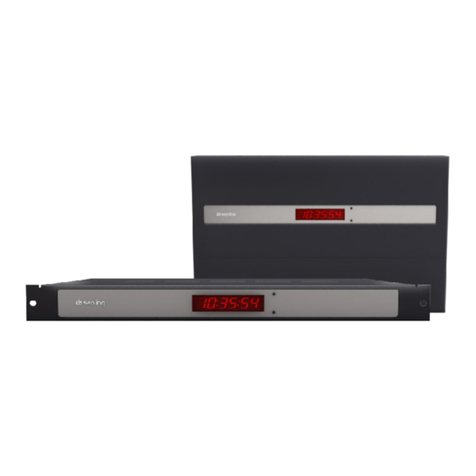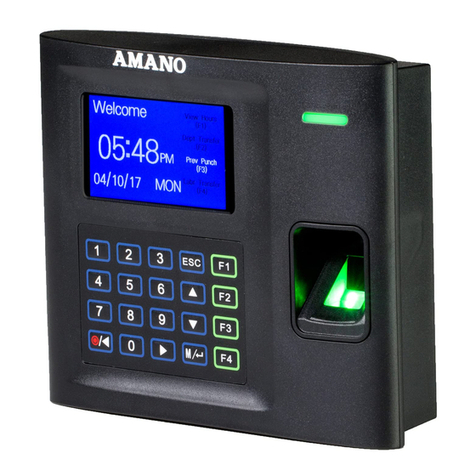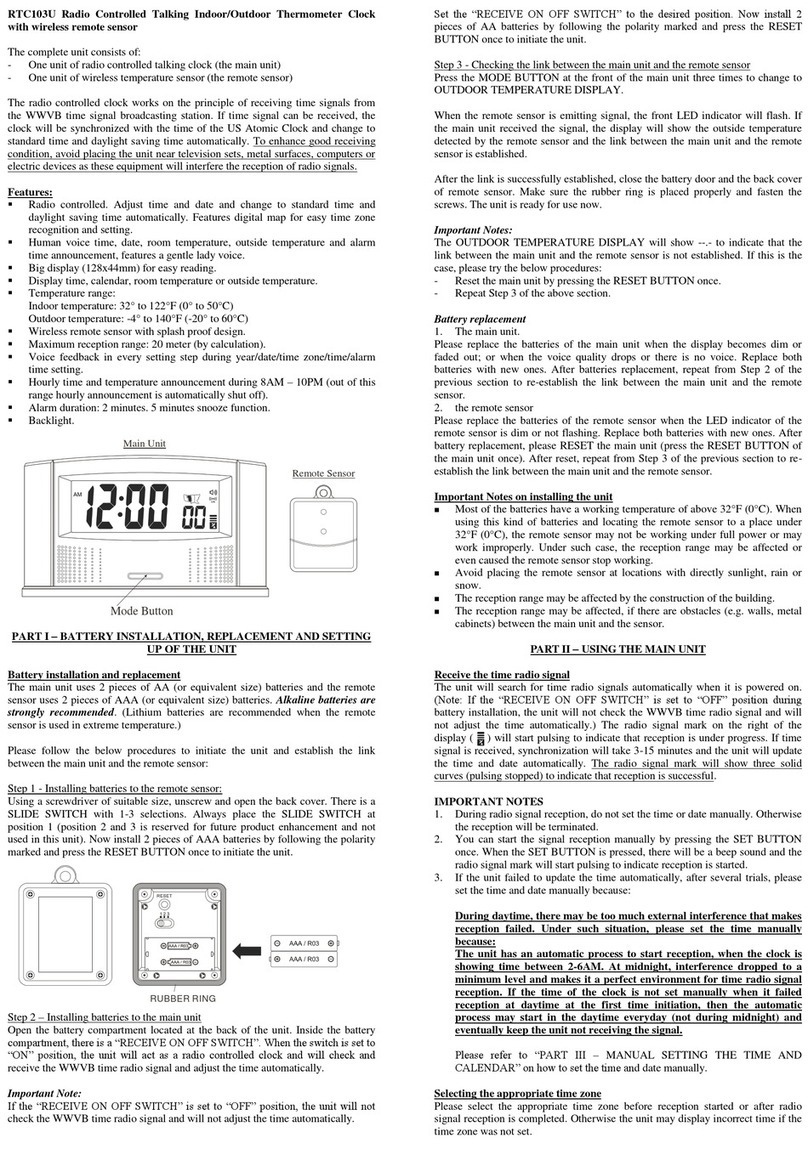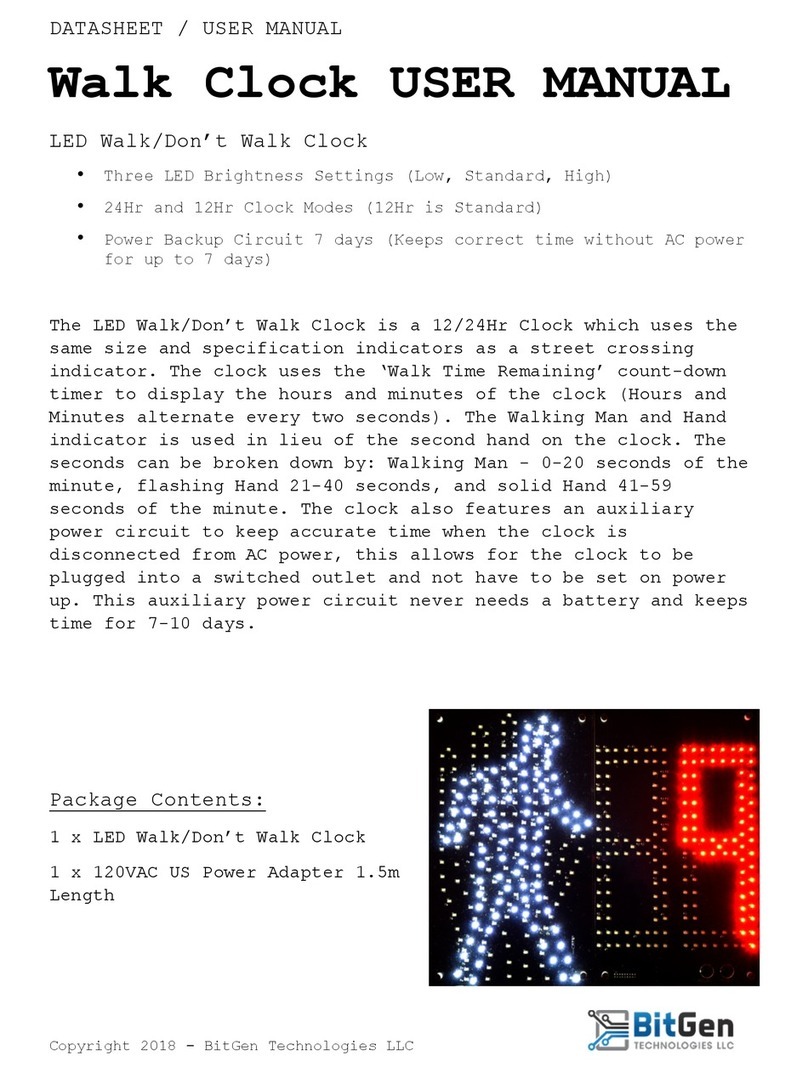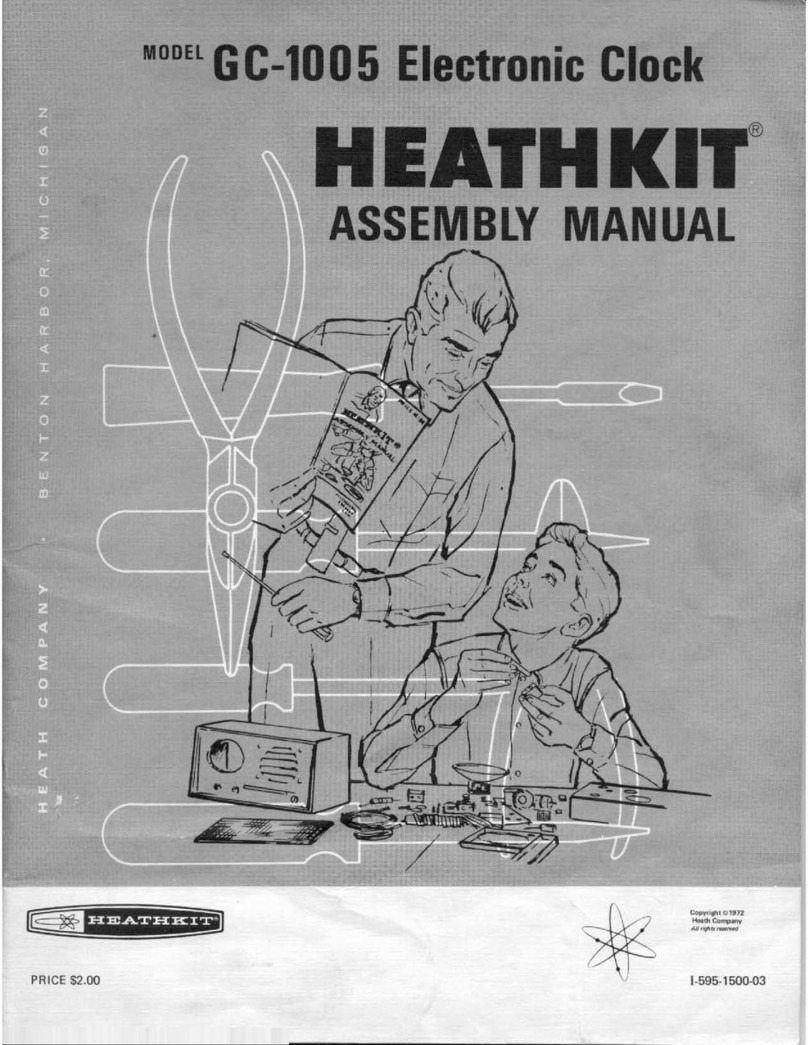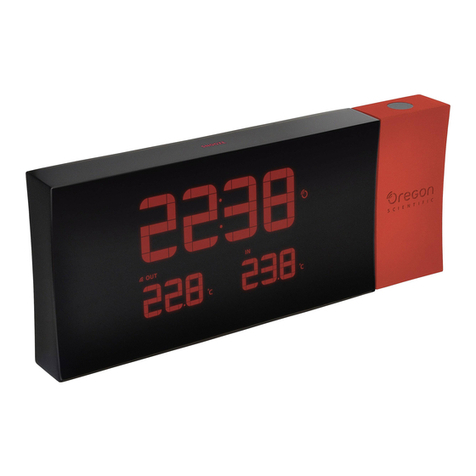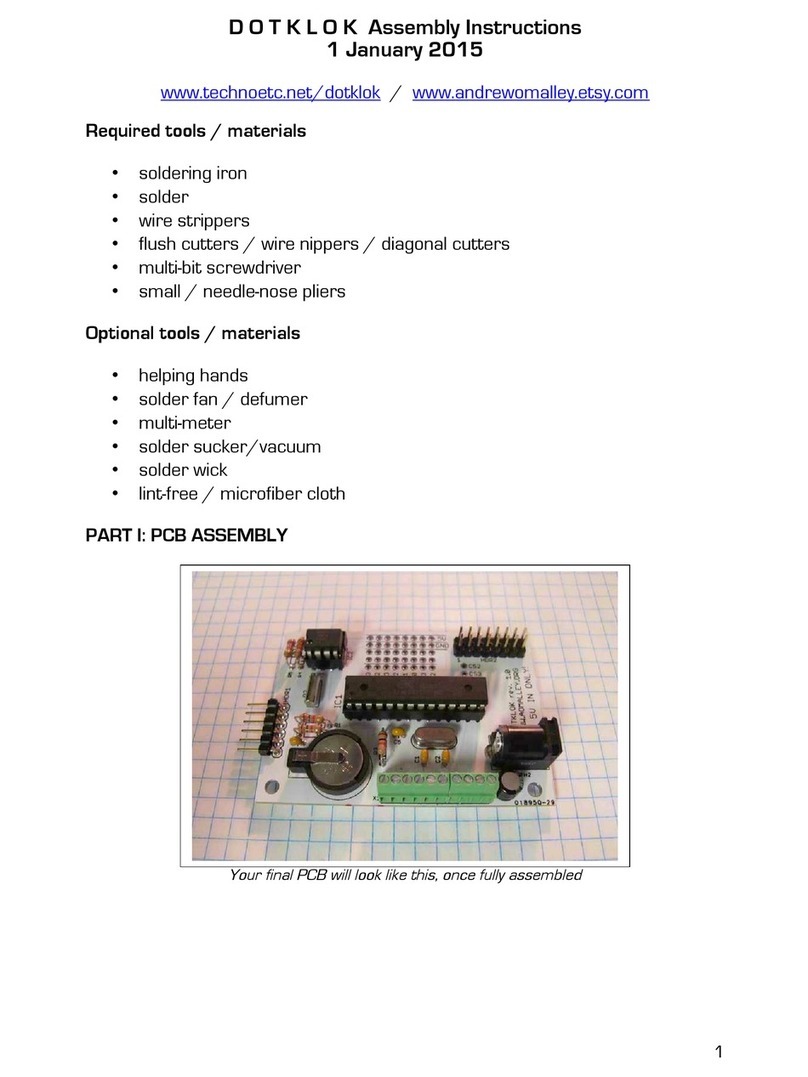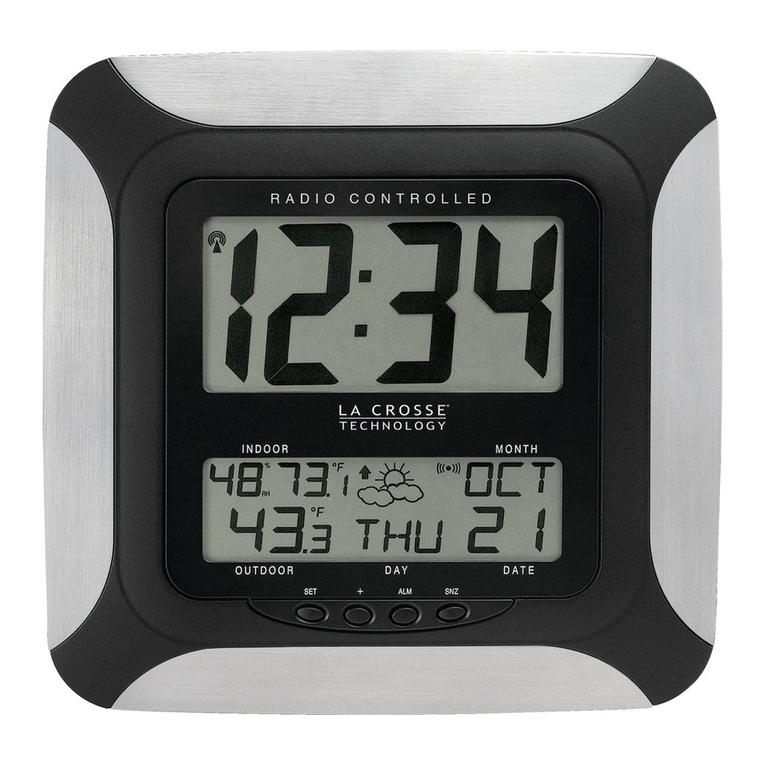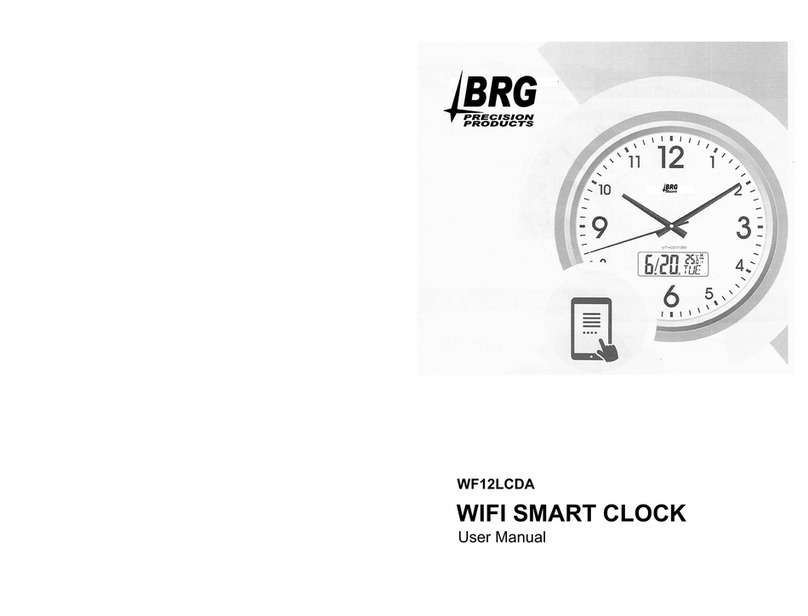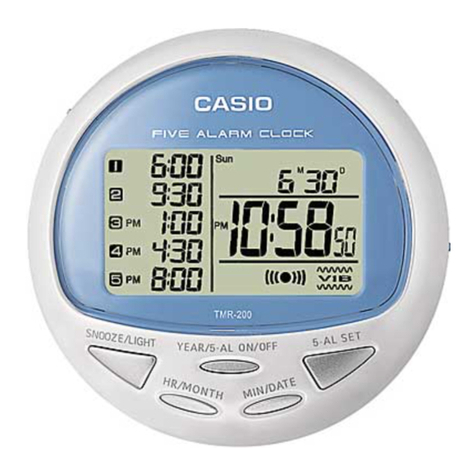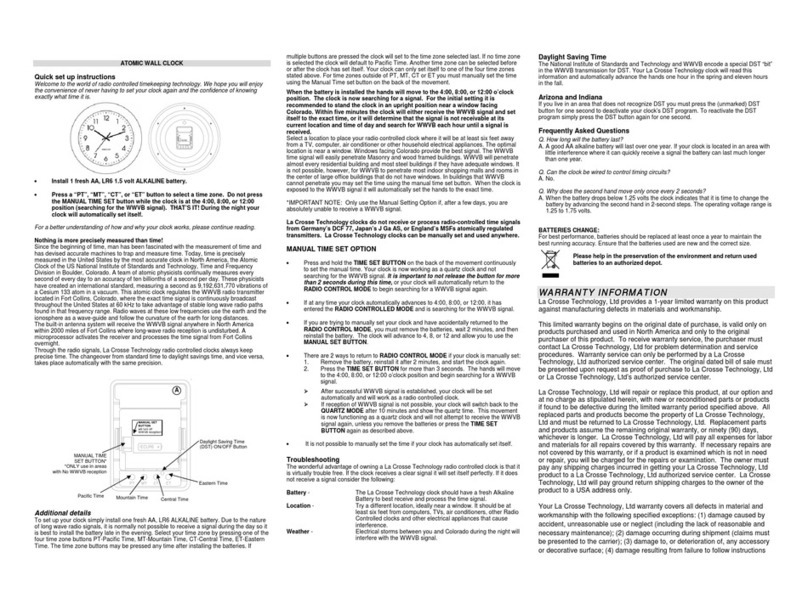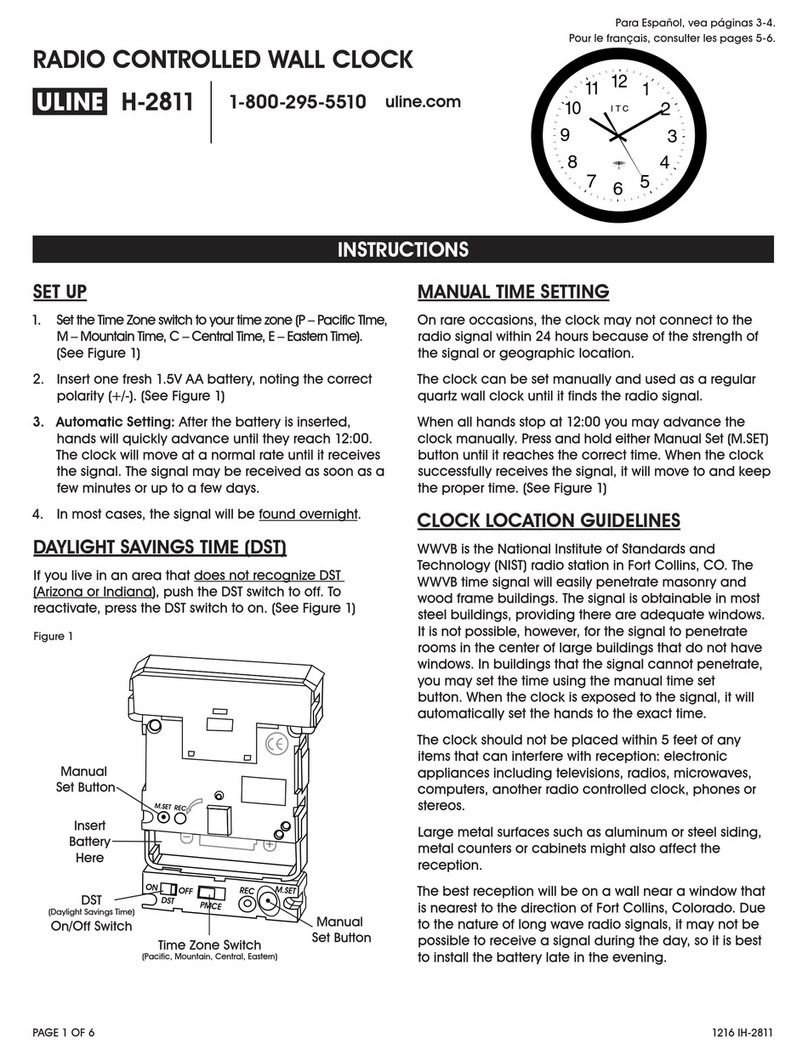
4
DuraTime Multi-path Wireless Communications
The examples listed on these pages are simplified for communicating system concepts. The number of actual clocks in a system could easily number in the thousands,
either densely located, or spread over a wide area, with complete coordination of all communications.
Signal Paths of an Active Network
Installing Battery powered Analog Cocks
When the wireless clock network is active, all clocks are within range of one or
more other clocks. Each clock receives and retransmits time signals.
The wireless network can also be configured as a continuously active network by
adding repeaters and other non-battery powered devices. Simply add radio
devices in areas where the signal absent. A mini-master device can be used as a
signal monitor to determine where the network is active or where additional
wireless devices are needed to extend the network. Once the continuously active
network is configured, the mini-master is no longer required to install or replace
battery powered analog clocks.
Battery powered analog clocks need to conserve power as much as possible, so
the internal radio is put to sleep most of the time. The clock awakens the radio
for ten seconds, seven times a day to obtain and propagate the time signal.
During this on period, the clocks instantly form a wireless network, transferring
data as needed and updating the time display. A hand-held mini-master clock is
used to provide a time signal when the wireless clock network is not active. The
dashed lines indicate the radio range of the active transmitters. The mini-master
provides a time signal for the clock to reference when the batteries are installed.
Once the newly installed clock receives a signal from the mini-master, it is
synchronized with the network and the mini-master is no longer required.
Multiple-redundant Master Clocks
Continuously Active Network using Digital Clocks
Multiple master clocks may be used to increase system reliability. Each master
clock can obtain time updates from multiple sources, simultaneously.
The master clocks are designed to nest on top of one another. Or, they may be
spread around the facility. Master clocks automatically communicate with one
another to determine which master clock shall be actively transmitting.
Digital clocks are externally powered and are continuously available to form a
network. Time is distributed to all clocks every other second or 43,200 times
per day. The mini-master clock can be used as a signal detector to determine if
the area to be covered is complete during and after installation. Externally
powered analog wall clocks and wall repeaters can also be used to form a
continuously active network.
Continuously Active Network with Digital and Analog Clocks
Alarm/Tone Generator with an Idle Wireless Network
In a hybrid system of externally powered and battery powered clocks, the network
is continuously active between digital clocks as indicated by the heavy dashed
lines. Network communications between battery powered analog clocks is
available for ten seconds, seven times per day.
The mini-master clock is not required to install the analog clocks that are within
range of the mains powered wireless devices. The mini-master clock can be used
as a signal detector to determine if a continuously active network signal is present.
If not, simply activate the time transmissions of the mini-master before installing
battery powered clocks.
The wireless alarm/tone generator must be located with 150 feet of an actively
transmitting component of the network, such as the master clock. Open areas
such as warehouse space or manufacturing facilities may extend this range up to
330 feet.
